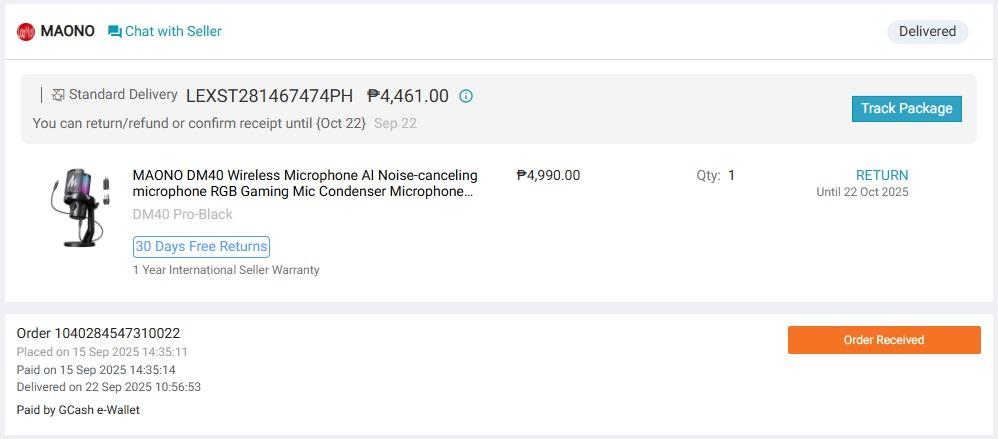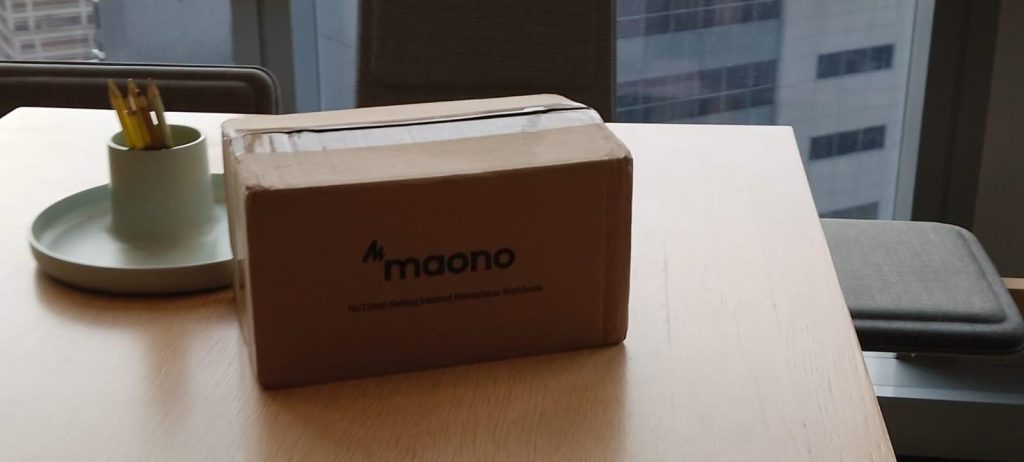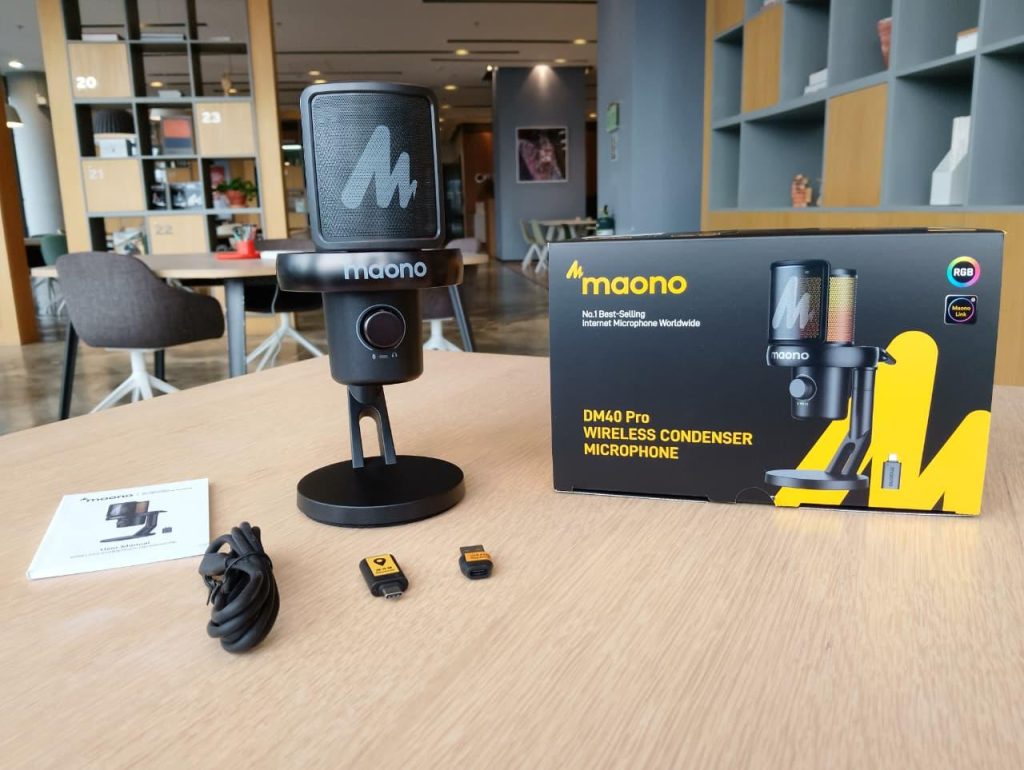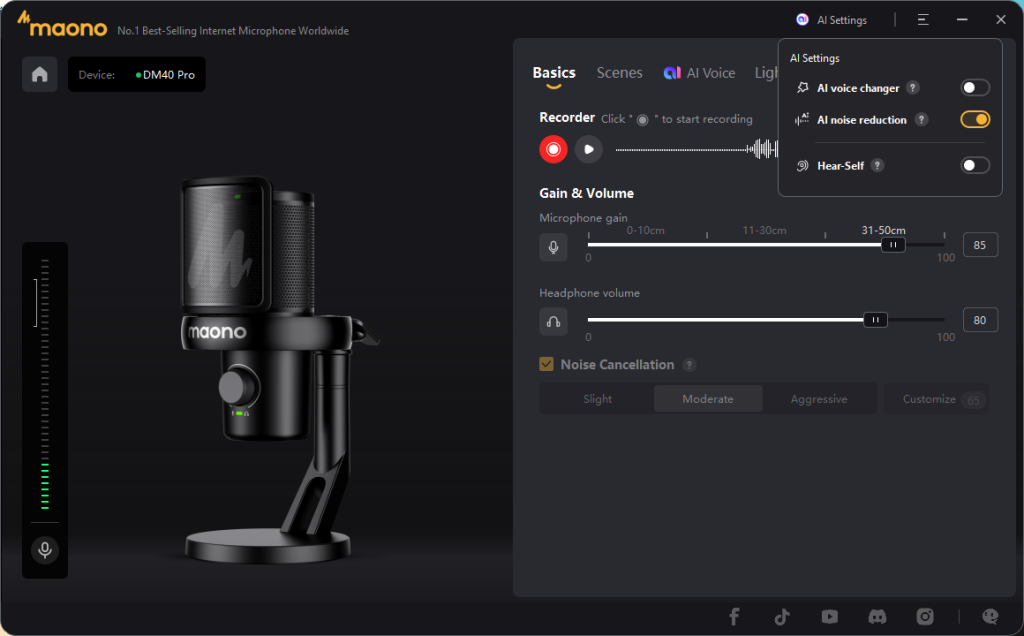Sometimes, the simplest problems just need the simplest solutions. When I realized my mic had static issues caused by its wires, I figured, why not just go wireless and remove the wire altogether?
I’m not an audiophile, nor will I pretend to be one, but play enough video games through a headset or listen to enough music and, down the line, you can tell when something’s wrong with the audio. I figured my trusty Fifine K690 could finally take a break, and after almost half a decade on the same device, it was time for an upgrade.

I came across the Maono DM40 on Lazada, and truth be told, I was somewhat hesitant to buy the regular version of the microphone because, at the time, it was at full price. Thankfully, like most online buyers, I just added it to my cart and, lo and behold, it coincided with an online sale, leading me to get the Maono DM40 Pro instead. With just a thousand-peso difference between the two versions, and since I didn’t opt for a boom arm due to space considerations, I bought the microphone and waited for its arrival.

Mic check! One, two!

Within a week of ordering, the device arrived in its own box (thank you, online shopping) that fit the microphone exactly. While the main box had a couple of dings from the overseas trip, everything inside was intact, and what’s important is, it worked.

Inside the box were the following: the DM40 Pro Wireless Condenser Microphone itself, a Type-C Bluetooth adapter, a Type-C male-to-male charging cable, and a USB-to-Type-C converter so you could attach the adapter to an empty USB port instead of a Type-C port. Instructions were also included on operating the microphone, which was very plug-and-play, with the accompanying Maono Link program serving as the main controller for PC use.
First impressions

While it may seem intimidating at first, the mic was genuinely user-friendly to operate. It connected instantly to the device where the receiver was attached, which in my initial testing was my desktop. I even tried it out on my mobile device and, while it may feel impractical to lug around a bigger mic for mobile purposes, it still got the job done. And I kid you not, I’m somewhat tempted to buy a second mic just for vlogs or as a spare when the need arises.
Mic setup was also one of my concerns because, as a streamer (or at least a VTuber) in the Philippines, heat is always an issue during summer. You’d always have a fan nearby, and that audio gets picked up. You’d tinker with your device’s noise cancellation settings or maneuver your fan to a spot where you still get cooler while the device doesn’t pick it up. But lo and behold, the Maono DM40 Pro had four noise cancellation settings, Slight, Moderate, Aggressive, and even a customizable level. What surprised me more was that, while I couldn’t adjust the noise cancellation to optimize my current situation manually, the AI noise reduction toggle in my Maono Link app actually improved my sound quality to the point where I didn’t need to use an app like Voicemod to clean it up.

Playing around with the Maono Link app itself also showed promise, as it allowed EQ adjustments and even reverberation options perfect for karaoke nights on stream and more. It even offered some voice-changing options for game night with the bros, along with light adjustment options to match the rest of my rig.
Final verdict
The Maono DM40 Pro was overall a good purchase and a great mic all around. While it may be a bit on the pricier side, it pays to be aware of current online sales. Going for the Pro version solved my initial wire problems and then some. A huge win considering the savings I got both financially and in table space.
Whether you’re a hobbyist or someone looking for a quality microphone at a good price, the DM40 series is where it’s at. And if you need more reason to go for the Pro (and maybe even get the boom arm too), here’s a list of differences between the two models:
| Feature | DM40 | DM40 Pro |
| Capsule / diaphragm size | 14 mm (or smaller) | 16 mm (larger) (Tech Centurion) |
| Battery / usage time (wireless mode) | ~1,500 mAh battery → ~40 hours usage (Maono) | ~2,600 mAh battery → up to ~75 hours usage (with RGB off) (Notebookcheck) |
| Noise cancellation / reduction modes | 3 preset levels (Slight / Moderate / Aggressive) (Maono Update) | 3 preset + custom mode for finer adjustment (Maono Update) |
| RGB lighting / color options | More limited (fewer colors / modes) (Maono) | Fully customizable RGB (16 million+ colors) (Maono) |
| AI Voice effects / modes | Fewer voice-changer options (e.g. ~6) (Amazon) | More built-in AI voice modes (e.g. ~10) (Amazon) |
| Wireless performance / latency | Good, but less optimized | More stable wireless link, lower latency claimed (Maono) |
| Software / app features | Uses Maono Link for EQ, noise, settings etc. | Same, with possibly more custom options (RGB, custom noise cancel, voice effects) (CGMagazine) |
| Charge / power | Takes ~2.5 hours to charge (for DM40) (Maono) | ~2 hours charge time reported (Maono) |
| Other specs (sampling, connectivity, etc.) | DM40 supports USB & wireless operation (PC Express) | DM40 Pro supports USB, USB-C, wireless, works with PC, Mac, etc. (Notebookcheck) |
Writer’s Note: This article isn’t sponsored by Maono, but if they or any other audio source would want to, please send me an email here: [email protected]

